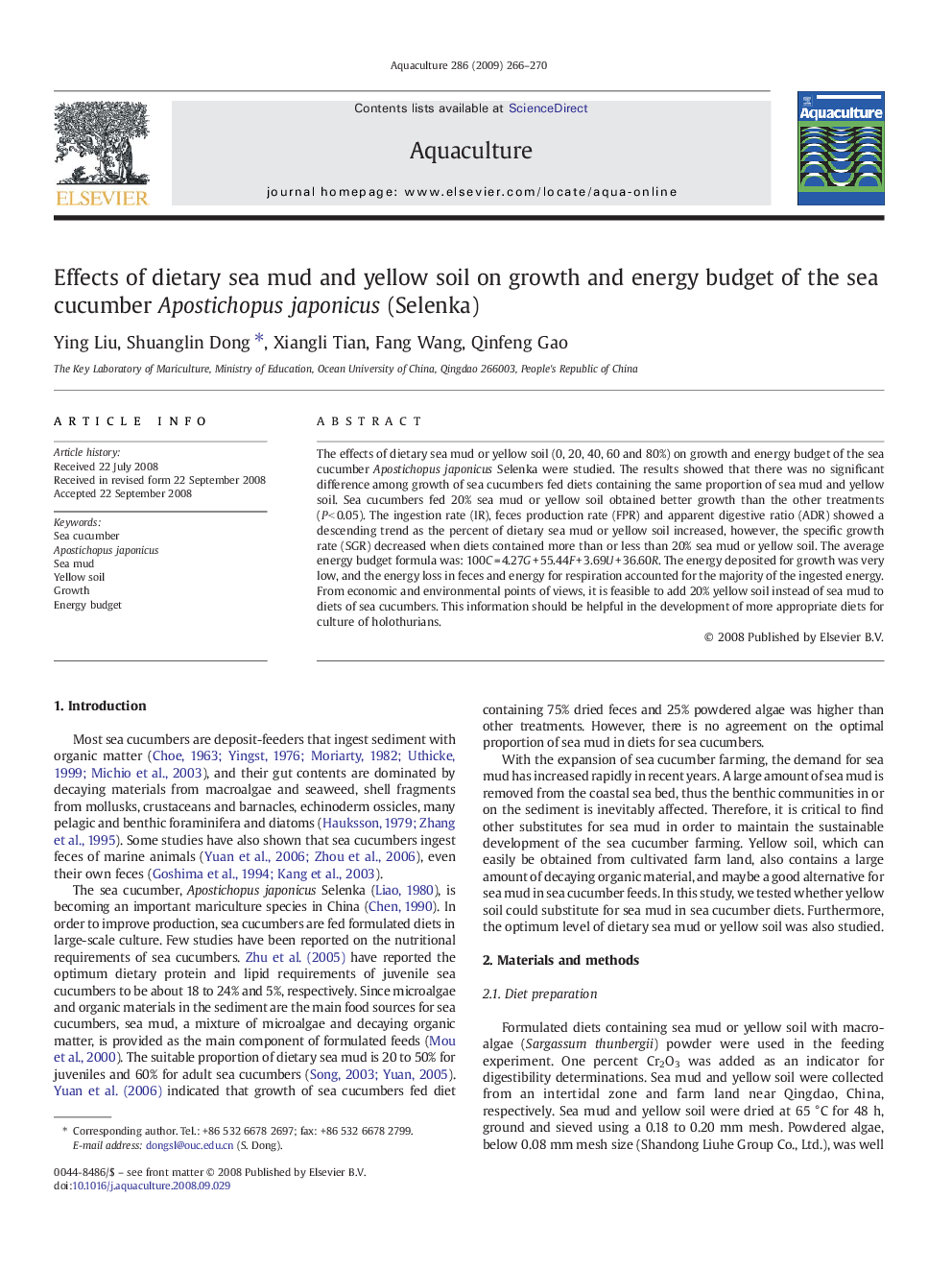| کد مقاله | کد نشریه | سال انتشار | مقاله انگلیسی | نسخه تمام متن |
|---|---|---|---|---|
| 2424201 | 1552954 | 2009 | 5 صفحه PDF | دانلود رایگان |

The effects of dietary sea mud or yellow soil (0, 20, 40, 60 and 80%) on growth and energy budget of the sea cucumber Apostichopus japonicus Selenka were studied. The results showed that there was no significant difference among growth of sea cucumbers fed diets containing the same proportion of sea mud and yellow soil. Sea cucumbers fed 20% sea mud or yellow soil obtained better growth than the other treatments (P < 0.05). The ingestion rate (IR), feces production rate (FPR) and apparent digestive ratio (ADR) showed a descending trend as the percent of dietary sea mud or yellow soil increased, however, the specific growth rate (SGR) decreased when diets contained more than or less than 20% sea mud or yellow soil. The average energy budget formula was: 100C = 4.27G + 55.44F + 3.69U + 36.60R. The energy deposited for growth was very low, and the energy loss in feces and energy for respiration accounted for the majority of the ingested energy. From economic and environmental points of views, it is feasible to add 20% yellow soil instead of sea mud to diets of sea cucumbers. This information should be helpful in the development of more appropriate diets for culture of holothurians.
Journal: Aquaculture - Volume 286, Issues 3–4, 17 January 2009, Pages 266–270